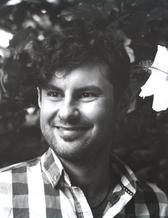
- Home
- Research
- Find research
- Adapting the A-TAC for use in South Africa
Adapting the A-TAC for use in South Africa
Interview with Jacques Nel on how and why he adapted our A-TAC screening questionnaire for use in South Africa.

Jacques, please tell me a bit about yourself
My name is Jacques Nel, I am from South Africa. I have a Masters by Thesis in Psychology from the University of Stellenbosch and am currently undergoing Clinical Psychological training at the University of Cape Town.
What is your connection with the GNC?
I have been acquainted with a few members of the Gillberg Neuropsychiatry Centre through research coordinator work at the Neurodiversity Centre, wherein PhD-candidate Ben Truter is seeking to validate a rapid and economical neurodevelopmental screening tool and enumerate the prevalence of ESSENCE conditions in a severely under-resourced and partially rural district of the Western Cape, South Africa.

What are your main areas of research?
I am currently drawn to the topic of neurodevelopmental detection and its intersectionality with spheres such as class, gender, etc. This includes commencing review research this year on camouflaging in the context of autism and its motivational correlates.
Could you please tell me a bit about your past and present research?
I am currently pursuing publication for thesis research that concluded in 2021. The Autism-Tics, ADHD and Comorbidities [A-TAC] inventory is a GNC-developed, multi-dimensional screening tool for childhood neurodevelopmental difficulties. My supervisor for this project is Dr Zuhayr Kafaar.
My research sought to address accessibility for such a screening tool in the Western Cape from both the sides of
1) adapting the A-TAC itself into Afrikaans and isiXhosa (two of the most predominantly spoken languages in the Western Cape) and
2) by investigating parent perceptions and receptivity to such screening tool use in an often under-resourced public healthcare sector.

What was the rationale behind this work?
The rationale was that the South African context has a comparative lack of both neurodevelopmentally oriented research as well as effectively adapted, multi-dimensional screening tools. The A-TAC represented an excellent and robust screen for both core neurodevelopmental concerns and comorbidities. I, with facilitated support by the Multi-Lingua Language School, recruited a participant group of 6 isiXhosa-speaking parents to assist with screen adaptation and focus group interview.
With regards to the A-TAC specifically, both the adaptation process and parent reflections were noteworthy. Of the initial university translations that were provided, 38% of Afrikaans items (a language derived from Dutch) and 72% of isiXhosa items (an indigenous language to South Africa) required significant revision to the original translations received, as they were overly formal and convoluted, or outright incorrect in intended meaning. Especially between English and isiXhosa, given the grammatical and construct/conceptual difference between the languages, I had to develop a novel Likert scale to support the adaptation process, as well as several stages of translational cross-checking.
From a receptivity perspective, isiXhosa parents were very warm to the idea of the A-TAC. They expressed that most doctors are unable to speak their language, and that they, in turn, do not necessarily have the English vocabulary to describe behavioural or learning difficulties effectively when they arise. The A-TAC, if taken further, provides hope for bridging language barriers at the basic level in healthcare provision. While further elements of screen application in the public health setting were raised, a noteworthy novel element was language-shame. Parents are made to feel judged and chastised for not being able to speak English to healthcare providers, despite the parents home language being the most prevalent in the province.

Have you managed to publish any articles yet?
None as yet but currently in the process of approaching journals.
Is there anything else we should be aware of?
For context: For language based work in the Western Cape of South Africa, it must be understood that historical ethic politics reflect in such language work. isiXhosa is the most prevalently spoken language in the province. However, as it is a non-European derived language, it was never been included as a formal lingua franca for the country or province. Many healthcare providers are unable to speak the language, and there is significant regional variation in the language which makes establishing a ‘standard’ for use difficulty.
If you have any queries regarding the South African versions of the A-TAC, please contact Jacques Nel nel.jacques@outlook.com


